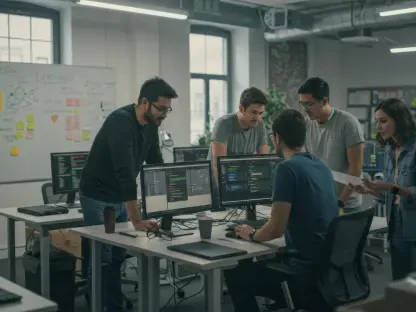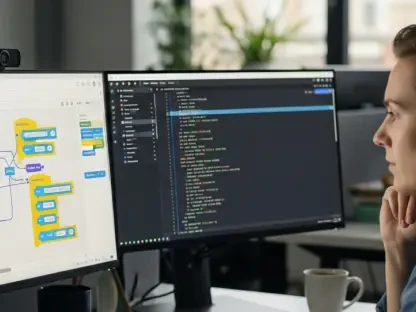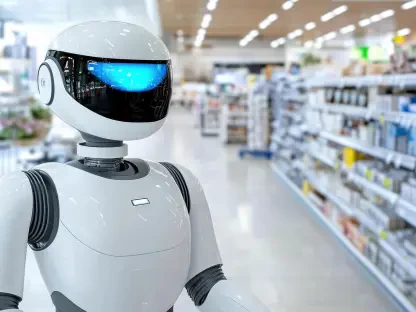Understanding MCP Servers and Their Role in Frontend Development
In an era where digital presence defines business success, frontend developers face mounting pressure to deliver seamless, high-performing web applications at unprecedented speeds. Model Context Protocol (MCP) servers have emerged as a game-changer, integrating coding environments, data management, and development tools into a unified platform that transforms how developers operate. These systems are not just tools but comprehensive ecosystems that empower teams to build, test, and deploy with remarkable efficiency.
The significance of MCP servers lies in their ability to streamline workflows by automating repetitive tasks, minimizing human error, and optimizing performance across diverse user bases. They are particularly vital for compatibility with leading frameworks such as React, Vue, and Angular, enabling developers to create scalable applications that meet modern demands. This adaptability ensures that projects, whether small-scale or enterprise-level, maintain robustness and speed.
Key industry players like Vercel, Netlify, and AWS Amplify have set benchmarks in this space, driving adoption among startups and established corporations alike. Their solutions cater to a broad spectrum of needs, from rapid deployment to complex cloud integrations. As more organizations recognize the value of these platforms, MCP servers are becoming a cornerstone of innovative web development strategies.
Key Trends and Innovations in MCP Server Technology
Emerging Features and Technological Advancements
MCP server technology is evolving rapidly, with cutting-edge features reshaping the landscape of frontend development. AI-driven analytics now play a pivotal role, offering insights into user behavior and system performance to fine-tune applications. Edge computing has also gained traction, reducing latency by processing data closer to end-users, thus ensuring faster load times across global markets.
Beyond performance, automation in deployment and debugging stands out as a critical advancement. These capabilities allow developers to focus on creative problem-solving rather than manual troubleshooting, significantly boosting productivity. Real-time data handling further enhances the ability to build dynamic, interactive web experiences that respond instantly to user inputs.
User-centric innovations are equally noteworthy, with intuitive interfaces making MCP servers accessible to novices and experts alike. Open-source options have democratized access, enabling diverse developer communities to contribute and benefit from shared resources. Such advancements ensure that technology evolves in step with the varied needs of its users.
Market Growth and Adoption Insights
The reliance on MCP servers within web development is surging, with market projections indicating robust growth from this year through 2027. Industry reports suggest a steep rise in adoption, driven by the need for efficient, scalable solutions in a competitive digital environment. Small businesses and large enterprises alike are integrating these platforms to stay ahead of the curve.
Performance metrics reveal a clear trend: startups leverage MCP servers for cost-effective scalability, while corporations utilize them for handling complex, high-traffic applications. Adoption rates are particularly high in sectors prioritizing digital transformation, such as e-commerce and media. This widespread acceptance underscores the platforms’ versatility across different scales of operation.
Looking ahead, MCP servers are poised to become indispensable as digital landscapes grow more intricate. Their ability to simplify development processes while maintaining high standards of performance positions them as essential tools. Continued investment and innovation in this space will likely fuel even broader integration in the coming years.
Challenges in Implementing MCP Servers for Frontend Projects
Integrating MCP servers into existing systems often presents significant hurdles, particularly for teams accustomed to traditional workflows. Compatibility issues with legacy infrastructure can delay adoption, requiring substantial reconfiguration or upgrades. This complexity can be a barrier, especially for organizations with limited technical resources.
Technological challenges also arise in ensuring consistent performance across varied global regions, where infrastructure disparities impact reliability. Developers must navigate these inconsistencies to guarantee uniform user experiences, a task that demands both expertise and strategic planning. Without tailored solutions, such disparities risk undermining application effectiveness.
To address these obstacles, improved documentation and robust community support are proving invaluable, easing the learning curve for new users. Training resources and tutorials further bridge knowledge gaps, while affordable pricing models and free tiers help smaller teams overcome cost concerns. These strategies collectively facilitate smoother transitions and wider accessibility to MCP server benefits.
Security and Compliance in MCP Server Ecosystems
Security remains a paramount concern within MCP server ecosystems, given the rising sophistication of cyber threats targeting web applications. Built-in protection mechanisms, such as encryption and access controls, form the first line of defense, safeguarding sensitive data. Providers are prioritizing these features to maintain user trust in an increasingly vulnerable digital space.
Compliance with data privacy regulations is another critical focus, as global standards continue to evolve. MCP servers are designed to adhere to stringent guidelines, ensuring safe handling of user information across jurisdictions. This commitment to regulatory alignment is essential for organizations operating in multiple markets, reducing legal and ethical risks.
Specific innovations, like automated issue resolution and AI-powered threat detection seen in platforms such as Cloudflare MCP, exemplify proactive security measures. These tools identify and mitigate risks in real time, enhancing system resilience. As regulatory landscapes shift, server providers adapt swiftly, reinforcing reliability and fostering confidence among developers and businesses alike.
The Future of MCP Servers in Frontend Development
The trajectory of MCP servers points toward deeper integration of artificial intelligence, cloud systems, and edge computing, promising even greater efficiency. These technologies will likely refine how developers approach frontend tasks, automating complex processes and enabling more personalized user experiences. Such advancements are expected to set new standards in application development.
Potential disruptors, including emerging server technologies or shifts in developer preferences toward niche tools, could reshape market dynamics. Staying agile amid these changes will be crucial for providers aiming to retain relevance. Monitoring these trends offers insights into how the industry might pivot to meet unforeseen demands or challenges.
Global performance expectations and user demands for faster, more resilient applications will continue to drive server capabilities. Economic factors and innovation are also anticipated to enhance accessibility, benefiting students, startups, and small businesses with limited budgets. This inclusive approach ensures that cutting-edge tools remain within reach, fostering a broader developer ecosystem.
Conclusion: Why MCP Servers Are the Backbone of Modern Web Dev
Reflecting on the insights gathered, it becomes evident that MCP servers have redefined frontend development through their emphasis on efficiency, scalability, and collaboration. Platforms like Vercel MCP, with its seamless deployment, Netlify Edge MCP, known for unparalleled speed, and AWS Amplify MCP, tailored for enterprise demands, have proven their worth as transformative forces. Their contributions have laid a strong foundation for modern web-building practices.
Looking beyond what has been achieved, developers are encouraged to explore MCP servers that align with specific project goals and team structures, ensuring optimal outcomes. Experimenting with diverse platforms could uncover unique advantages tailored to individual needs. Additionally, staying informed about emerging features and security updates is advised to maintain a competitive edge in an ever-evolving field. These steps promise to sustain momentum and drive continued innovation in the digital realm.









